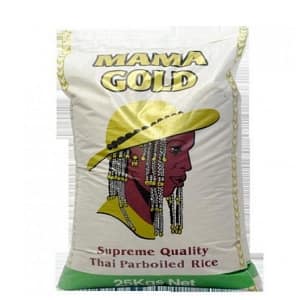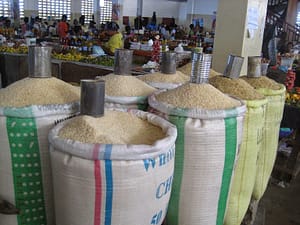

The cost of rice in Nigeria, a staple food for millions in the country, is influenced by a complex interplay of factors ranging from agricultural practices to international trade policies. Understanding these factors is crucial for both consumers and policymakers, especially considering the role of rice in ensuring food security and its impact on the broader economy.
Agricultural Productivity
The productivity of rice farms in Nigeria is a foundational factor affecting rice prices. Yield per hectare can significantly impact how much rice is available in the market. Factors such as the quality of seeds, farming techniques, access to fertilizers, and pest control methods directly influence agricultural output. In regions where farmers adopt modern farming practices and have access to high-yield seed varieties, production costs may decrease, potentially leading to lower market prices. Conversely, areas with outdated practices or limited access to inputs often see lower yields and higher production costs, contributing to higher prices.
Government Policies
Government interventions and policies play a pivotal role in determining the price of rice. Tariffs, subsidies, and import bans can either increase or decrease the cost of rice. For instance, Nigeria has implemented policies aimed at boosting local rice production, including import restrictions to protect domestic farmers from international competition. While such policies can incentivize local production, they may also lead to short-term price increases if domestic output cannot meet demand. Additionally, subsidies for rice farmers on inputs like seeds and fertilizers can reduce production costs, potentially lowering prices if these savings are passed on to consumers.
Importation
The importation of rice significantly influences its price in Nigeria. As a major importer of rice, Nigeria’s reliance on imported rice to meet its demand plays a critical role in setting market prices. International rice prices, currency exchange rates, and import tariffs directly affect the cost of imported rice. A strong Naira against the dollar makes imports cheaper, potentially lowering prices, while a weak Naira does the opposite. Import restrictions and tariffs designed to encourage local production can lead to price increases if domestic supply falls short of meeting the national demand.
Market Demand
The demand for rice within Nigeria also impacts its price. With a growing population and rice being a staple food, demand is consistently high. Cultural preferences for particular rice varieties can lead to price variations across different types. Festive seasons typically see spikes in demand, leading to temporary price increases. The elasticity of demand—how responsive consumers are to price changes—can also influence pricing strategies among sellers, with inelastic demand (where consumers continue to buy rice despite price increases) potentially leading to higher cost of rice in Nigeria.
Infrastructural Challenges
Infrastructure related to transportation, storage, and processing significantly affects the cost of rice. Poor road networks increase transportation costs from farms to markets or processing facilities, contributing to higher prices. Inadequate storage facilities can lead to post-harvest losses, reducing the available supply and putting upward pressure on prices. Additionally, the capacity and efficiency of rice milling and processing facilities determine the final quality and cost of processed rice. Investments in infrastructure can lead to cost reductions, whereas deficiencies can exacerbate price pressures.
Climatic Conditions
Climate plays a critical role in rice production, with adverse weather conditions such as floods or droughts potentially devastating crops and reducing supply, leading to price hikes. Nigeria’s diverse climate zones can see varying impacts, with some areas more prone to climatic challenges than others. Irrigation infrastructure can mitigate some of these risks, but at an additional cost that may affect rice prices.
The cost of rice in Nigeria is the result of a complex web of factors, each intertwining with the others to influence the final cost to consumers. Addressing the challenges related to agricultural productivity, government policy, importation, market demand, infrastructure, and climate can help stabilize rice prices. However, these solutions require coordinated efforts from both the government and the private sector. By increasing investment in agricultural technology, improving infrastructure, and crafting policies that balance the needs of consumers with those of local producers, Nigeria can work towards a future where rice is not only more affordable but also a driver of economic growth and food security.
Read Also: Petrol Prices Increase In Nigeria, How It Started

[…] Read Also: What Influences the Cost of Rice in Nigeria? […]